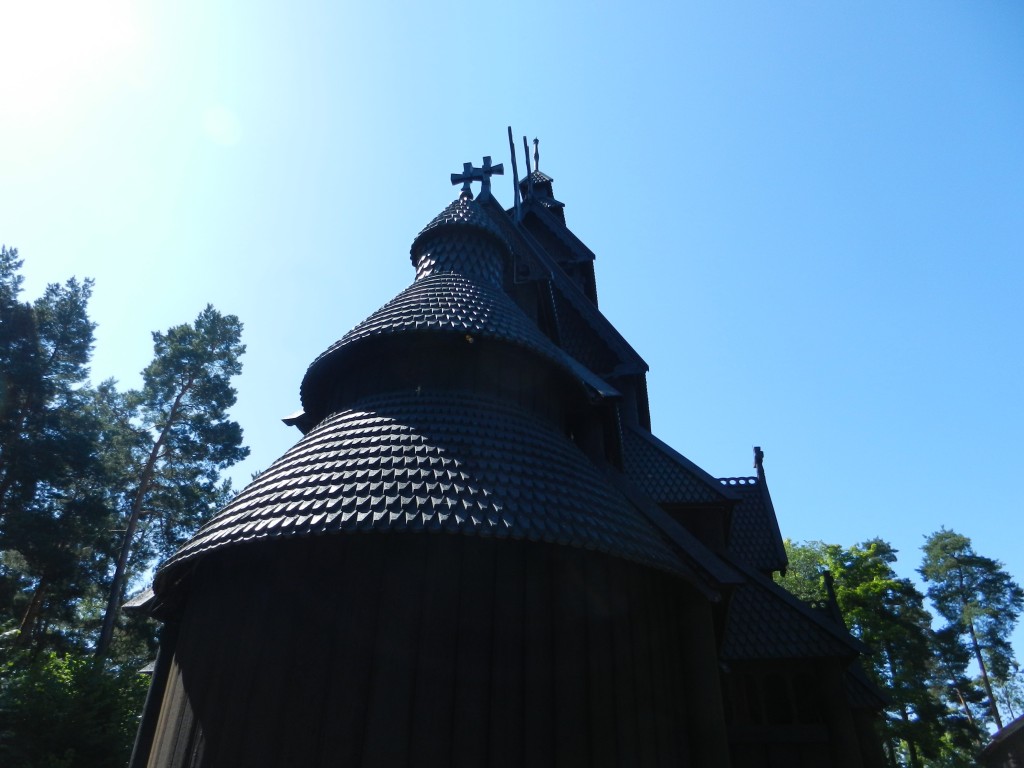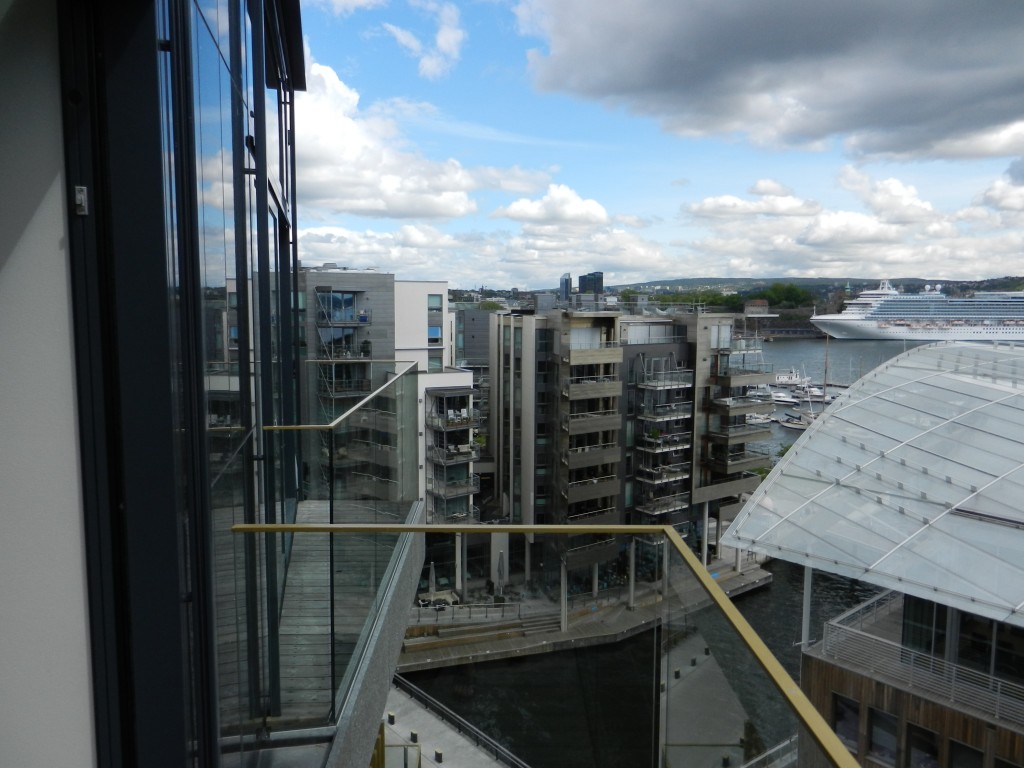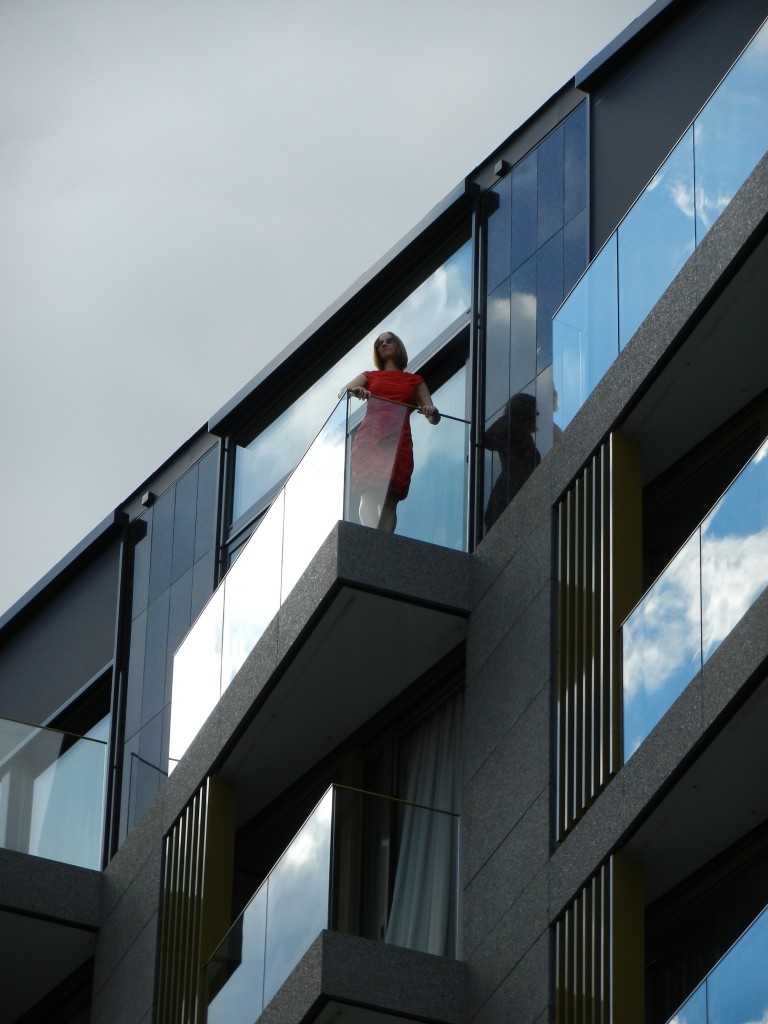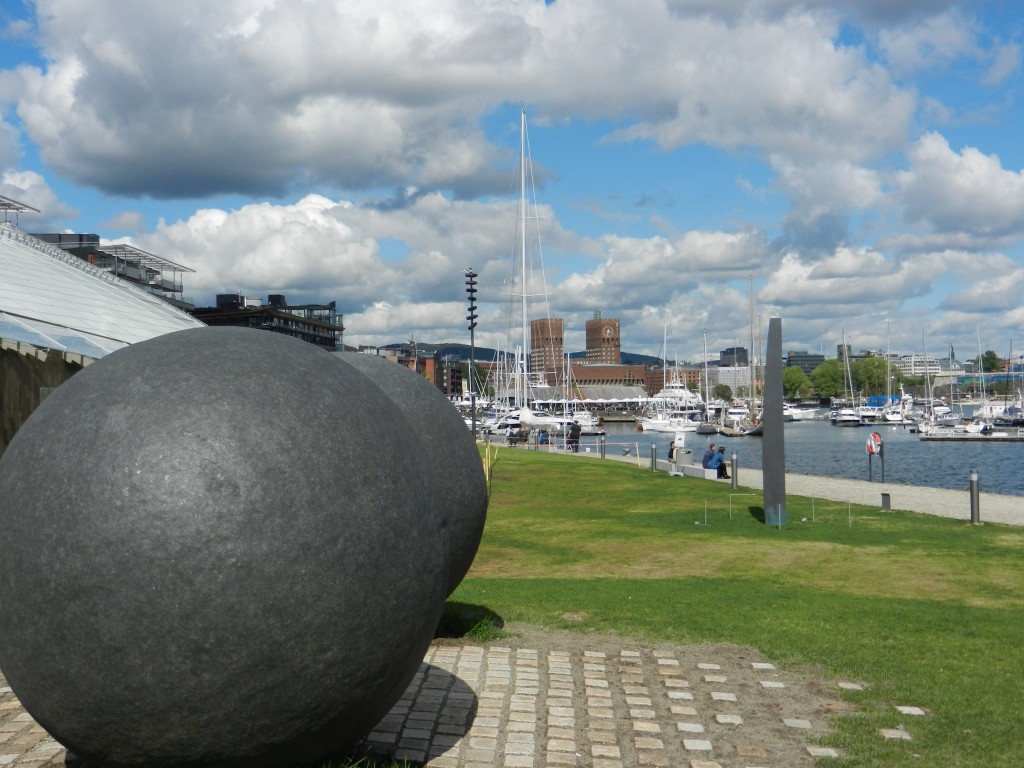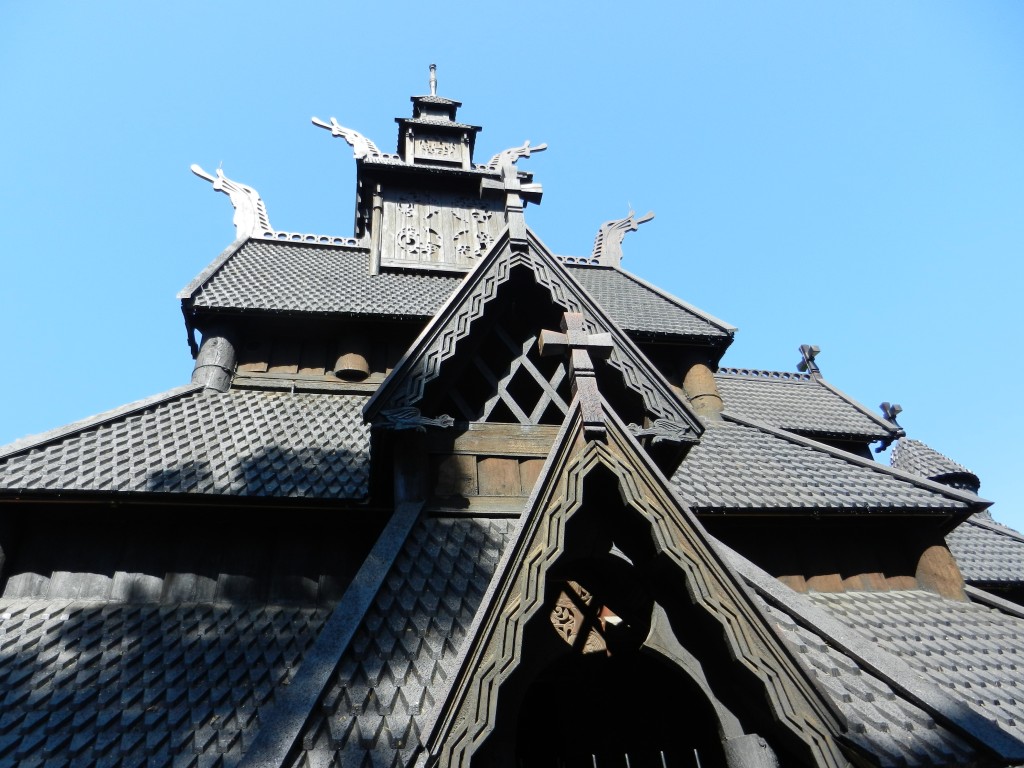 Gol Stave Church is one of less than 30 remaining stave churches in Norway dating from 1200, and was moved in the 1880’s from Hallingdal to Oslo, presently the Norsk Folkemuseum/Norwegian Folk Museum at Bygdøy. “The congregation at Gol had grown hence a new larger church was built in the 1870’s. In 1881, the Society for the Preser-vation of Ancient Norwegian Monuments bought the stave church, and King Oscar II offered to finance its re-erection in the public park at Bygdø Kongsgård. Because the snow conditions for sled transportation was too poor, the disassembled church could not be moved to Christiania (Oslo) before in January 1884! In the summer that same year, the church was re-erected at Bygdøy after extensive restoration. When the stave church was disassembled in 1884, it had been and altered and remodeled both in 1664 and 1802. When re-erected at Bygdøy, only the basic interior structure was reused. The exterior was modeled after Borgund Stavkirke in Sogn on the Norwegian west coast.” Today it is the most popular of the 150 historic buildings at Bygdøy, and one of only five medieval buildings in the open-air museum.
Gol Stave Church is one of less than 30 remaining stave churches in Norway dating from 1200, and was moved in the 1880’s from Hallingdal to Oslo, presently the Norsk Folkemuseum/Norwegian Folk Museum at Bygdøy. “The congregation at Gol had grown hence a new larger church was built in the 1870’s. In 1881, the Society for the Preser-vation of Ancient Norwegian Monuments bought the stave church, and King Oscar II offered to finance its re-erection in the public park at Bygdø Kongsgård. Because the snow conditions for sled transportation was too poor, the disassembled church could not be moved to Christiania (Oslo) before in January 1884! In the summer that same year, the church was re-erected at Bygdøy after extensive restoration. When the stave church was disassembled in 1884, it had been and altered and remodeled both in 1664 and 1802. When re-erected at Bygdøy, only the basic interior structure was reused. The exterior was modeled after Borgund Stavkirke in Sogn on the Norwegian west coast.” Today it is the most popular of the 150 historic buildings at Bygdøy, and one of only five medieval buildings in the open-air museum.
See how it has been altered and remodeled by looking at Hans Gude’s drawing from 1846, here: norskfolkemuseum.
“The term “stave church” refers to the staves, or posts, that support the roof. The hand carved ornaments on the south and west portals has plant and dragon motifs. The runic inscriptions on the choir wall presumably date back to the time when the church was originally built. The paintings on the choir and apse walls date back to 1652.” I love studying the ornaments as well as it beautiful form. The open air museum as well as their exhibitions, see the-norwegian-spirit post, is well worth a visit, during the summer it is a short and pleasant ferry trip from Aker Brygge/Wharf. Do visit when in Oslo.


